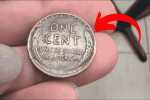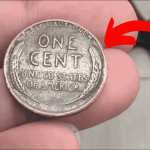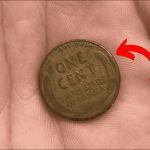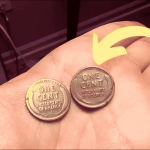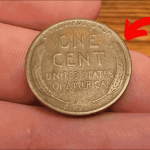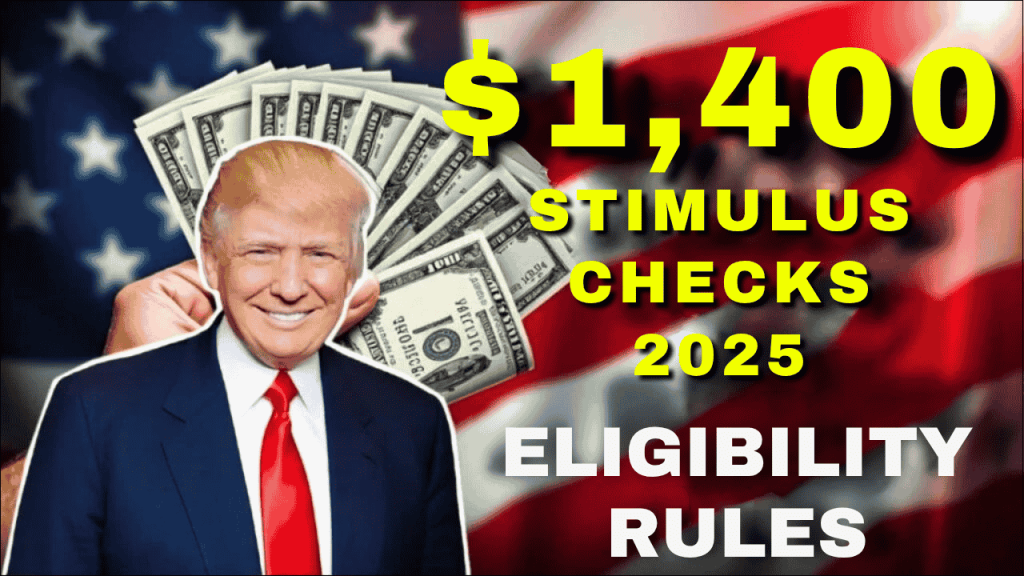
Thousands of Americans, particularly seniors and low-income individuals, still have a critical opportunity to claim their missed $1,400 stimulus payment from 2021. This isn’t a new government program but rather the third round of Economic Impact Payments distributed under the American Rescue Plan Act.
The IRS has established April 15, 2025, as the absolute final deadline to claim these missed payments through the Recovery Rebate Credit system. After this date, there will be no extensions, grace periods, or additional opportunities to receive this money.
Many eligible recipients never received their payments initially because they weren’t required to file tax returns in 2021, were unaware of the claiming process, or experienced address changes that prevented delivery. This has left significant amounts of money unclaimed—money that could provide meaningful financial relief during these challenging economic times.
Payment Overview and Final Deadline
| Key Detail | Information | Critical Importance |
|---|---|---|
| Payment Amount | Up to $1,400 per eligible individual | Maximum possible benefit |
| Original Program | Third Economic Impact Payment (2021) | American Rescue Plan Act |
| Claiming Method | Recovery Rebate Credit on 2021 tax return | Only available method |
| Final Deadline | April 15, 2025 | No extensions available |
| Payment Timeline | 2-3 weeks after filing | Direct deposit or check |
| Estimated Unclaimed | Billions in missing payments | Significant opportunity |
Complete Eligibility Requirements
Primary Qualification Criteria
| Requirement | Specification | Verification Method |
|---|---|---|
| Tax Filing Status | Not claimed as dependent in 2021 | Tax return review |
| Income Limits | Within IRS guidelines for full/partial payment | AGI calculation |
| Missing Payment | Did not receive third stimulus in 2021 | Payment history check |
| Social Security Status | Valid SSN or ITIN | Tax identification |
| Government Benefits | Recipients still eligible | No automatic disqualification |
The eligibility criteria mirror the original third stimulus payment requirements from 2021. Importantly, receiving Social Security benefits, disability payments, unemployment compensation, or other government assistance does not disqualify you from claiming this credit.
Even individuals with minimal or no employment income may qualify for the full $1,400 payment. The income thresholds are generous enough that many people who assume they don’t qualify actually do meet the requirements.
Income Phase-Out Structure
| Filing Status | Full Payment Income | Phase-Out Begins | No Payment Above |
|---|---|---|---|
| Single | $0 – $75,000 | $75,001 | $80,000 |
| Married Filing Jointly | $0 – $150,000 | $150,001 | $160,000 |
| Head of Household | $0 – $112,500 | $112,501 | $120,000 |
| Married Filing Separately | $0 – $75,000 | $75,001 | $80,000 |
Recovery Rebate Credit System Explained
How the Credit Functions
| Aspect | Description | Benefit |
|---|---|---|
| Credit Type | Refundable tax credit | Reduces tax owed or increases refund |
| Filing Requirement | Must file 2021 tax return | Even if not normally required |
| Processing Time | Standard IRS processing | 2-3 weeks for direct deposit |
| No Application | Automatic when return filed | No separate forms needed |
| Maximum Benefit | $1,400 per eligible person | Plus dependent amounts |
The Recovery Rebate Credit operates like any standard tax credit but with special provisions for those who typically don’t file returns. You don’t need to navigate complex application processes or prove financial hardship—simply filing a 2021 tax return with the credit claimed is sufficient.
The system is designed to be accessible regardless of income level or tax filing history. Even if you owe no taxes or typically receive full refunds, the credit can still provide the full $1,400 benefit.
Step-by-Step Verification Process
Checking Your Payment History
| Verification Method | Access Requirements | Information Provided |
|---|---|---|
| IRS Online Account | Create account at IRS.gov | Complete payment history |
| Bank Statements | 2021 records | Direct deposit confirmations |
| Tax Documents | 2021 tax returns | Payment reconciliation |
| Mailed Check Records | Address verification | Physical payment proof |
| IRS Transcripts | Online or mail request | Official payment documentation |
Before filing a 2021 tax return, it’s crucial to verify whether you actually received the third stimulus payment. The most reliable method is creating an IRS online account and reviewing your payment history for any Economic Impact Payments between March and December 2021.
Look specifically for deposits labeled as “EIP” or “Economic Impact Payment” in the amount of $1,400. If you moved during 2021, check whether a mailed check might have been sent to a previous address and never reached you.
Payment Distribution Timeline (2021)
| Distribution Wave | Date Range | Method | Recipients |
|---|---|---|---|
| First Wave | March 2021 | Direct deposit | Tax filers with banking info |
| Second Wave | April 2021 | Mailed checks | No banking information |
| Third Wave | May-December 2021 | Various methods | Delayed processing |
| Final Payments | Through December 2021 | Plus-up payments | Income adjustments |
Filing Process and Requirements
Required Documentation
| Document Type | Purpose | Where to Obtain |
|---|---|---|
| Social Security Number | Identity verification | Social Security Administration |
| 2021 Income Information | Eligibility determination | W-2s, 1099s, other income docs |
| Bank Account Details | Direct deposit setup | Financial institution |
| Previous Tax Returns | Reference information | Personal records or IRS |
| Identity Documents | IRS verification | Government-issued ID |
Filing a 2021 tax return to claim the Recovery Rebate Credit requires gathering basic financial information from that tax year. Even if your income was minimal or you didn’t work, you’ll need to document any income sources you had in 2021.
Free Filing Resources
| Resource Type | Eligibility | Services Provided |
|---|---|---|
| IRS Free File | Income under $73,000 | Complete tax preparation |
| VITA Programs | Low-to-moderate income | Free tax preparation assistance |
| AARP Tax-Aide | All ages (focus on 50+) | Free tax help |
| Community Centers | Local eligibility varies | Tax preparation support |
Many community organizations offer free tax preparation services specifically for seniors and low-income individuals. These services can ensure your return is filed correctly and help you claim all available credits beyond just the Recovery Rebate Credit.
Timeline and Processing Information
Critical Dates and Deadlines
| Milestone | Date | Significance |
|---|---|---|
| Final Filing Deadline | April 15, 2025 | Last day to claim credit |
| Processing Begins | Upon filing | IRS review starts |
| Refund Timing | 2-3 weeks | Direct deposit preferred |
| Check Mailing | 4-6 weeks | If no banking information |
| Deadline Extension | None available | Firm cutoff date |
The April 15, 2025 deadline is absolute and final. The IRS has made it clear that no extensions or grace periods will be granted after this date. Once this deadline passes, the opportunity to claim the Recovery Rebate Credit will be permanently closed.
Processing times for returns claiming the Recovery Rebate Credit follow standard IRS procedures. Direct deposit is the fastest option, typically resulting in refunds within 2-3 weeks of acceptance. Paper checks take longer, usually 4-6 weeks from the processing date.
Additional Credits and Benefits
Other Available 2021 Credits
| Credit Type | Maximum Amount | Eligibility |
|---|---|---|
| Earned Income Tax Credit | Up to $6,728 | Working families |
| Child Tax Credit | Up to $3,600 per child | Parents/guardians |
| Child and Dependent Care | Up to $8,000 | Childcare expenses |
| Premium Tax Credit | Varies | Health insurance premiums |
Filing a 2021 tax return to claim the Recovery Rebate Credit may also make you eligible for other valuable credits you might have missed. The Earned Income Tax Credit alone can be worth thousands of dollars for working families.
Tax preparation professionals can help identify all credits you’re entitled to claim, potentially increasing your refund significantly beyond the $1,400 stimulus payment.
Scam Prevention and Safety
Common Scam Tactics
| Scam Type | Warning Signs | Protection Strategy |
|---|---|---|
| Phone Calls | Immediate payment offers | IRS never calls unsolicited |
| Email Phishing | Urgent action required | Verify through official IRS.gov |
| Text Messages | Click links for payments | Delete without responding |
| Fee-Based Services | Upfront payment required | Use legitimate free services |
| Identity Theft | Personal information requests | Never provide SSN to callers |
As awareness of this final opportunity spreads, scammers are increasingly targeting vulnerable populations with fraudulent offers. The IRS communicates primarily through official mail and secure online portals—never through unsolicited phone calls, texts, or emails.
Legitimate Help Sources
| Resource | Contact Method | Services |
|---|---|---|
| IRS Official Website | IRS.gov | Forms, instructions, tools |
| IRS Taxpayer Assistance | 1-800-829-1040 | Official phone support |
| Local VITA Sites | Community locations | Free tax preparation |
| Certified Tax Professionals | Licensed preparers | Professional assistance |
Financial Impact and Importance
Household Budget Benefits
| Use Category | Percentage of Recipients | Financial Impact |
|---|---|---|
| Basic Necessities | 65% | Food, utilities, rent |
| Medical Expenses | 25% | Healthcare costs |
| Debt Reduction | 20% | Credit cards, loans |
| Emergency Savings | 15% | Financial security |
| Transportation | 10% | Vehicle repairs, fuel |
For many recipients, particularly seniors on fixed incomes and low-wage workers, the $1,400 payment represents significant financial relief. This money can cover essential expenses, reduce debt burdens, or provide a foundation for emergency savings.
The payment is especially meaningful for households that have struggled with rising costs for food, utilities, and healthcare since the pandemic began.
Special Circumstances and Considerations
Unique Situations
| Circumstance | Impact on Eligibility | Required Action |
|---|---|---|
| Address Changes | May have caused missed delivery | Update address with IRS |
| Death of Taxpayer | Estate may claim credit | Consult tax professional |
| Military Deployment | No impact on eligibility | File as usual |
| Incarceration | Generally eligible | May need assistance filing |
| Non-Filer Status | Must file 2021 return | Use simple filing options |
Several special circumstances may have prevented people from receiving their original payments or may complicate the claiming process. Military personnel deployed overseas, individuals who were incarcerated, or those who experienced homelessness may need additional assistance but generally remain eligible.
State Tax Implications
State Treatment of Federal Credit
| State Type | Tax Treatment | Additional Considerations |
|---|---|---|
| No State Income Tax | No impact | Alaska, Florida, Nevada, etc. |
| Follows Federal Rules | Not taxable | Most states |
| Special Provisions | Varies | Check state requirements |
| Separate Filing | May be required | Consult state instructions |
Most states that have income taxes follow federal guidelines and don’t tax the Recovery Rebate Credit. However, some states have unique provisions that may affect your state tax return when claiming federal credits.
Conclusion and Action Steps
The opportunity to claim your missed $1,400 stimulus payment through the Recovery Rebate Credit represents the final chance to receive money that was rightfully yours from the 2021 American Rescue Plan. With the April 15, 2025 deadline rapidly approaching, immediate action is essential.
This payment could provide meaningful financial relief for household expenses, medical bills, or emergency savings. The filing process, while requiring some effort, is straightforward and can often be completed with free assistance from community organizations.
Don’t let this opportunity pass by. If there’s any possibility you missed your third stimulus payment, take the time to verify and potentially file a 2021 tax return. The worst outcome is discovering you already received the payment, but the best result could be receiving $1,400 that was intended to help you during challenging economic times.
The deadline is firm, the process is accessible, and the potential benefit is substantial. Take action now to ensure you don’t miss this final opportunity for financial relief.
Frequently Asked Questions
How do I know if I already received my $1,400 stimulus payment?
Check your IRS online account at IRS.gov for payment history, review 2021 bank statements for Economic Impact Payment deposits, or look through tax documents from 2021. The payment would have been issued between March and December 2021.
Can I still file even if I don’t usually need to file tax returns?
Yes, you can file a 2021 tax return specifically to claim the Recovery Rebate Credit even if your income was below the normal filing requirement. Many people with minimal income are still eligible for the full $1,400 payment.
What happens if I miss the April 15, 2025 deadline?
The opportunity to claim the Recovery Rebate Credit will be permanently lost. The IRS has stated there will be no extensions or grace periods after this deadline, making immediate action crucial.
Is the Recovery Rebate Credit considered taxable income?
No, the Recovery Rebate Credit is not taxable income. You won’t owe taxes on the $1,400 payment, and it won’t affect your eligibility for other government benefits or programs.
